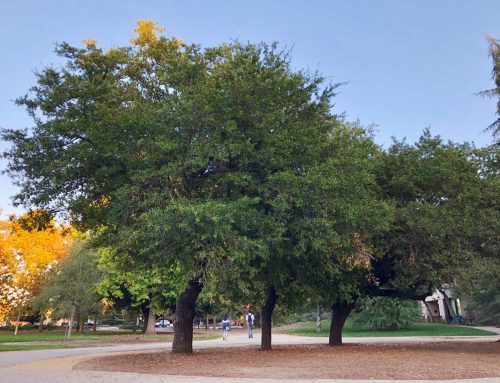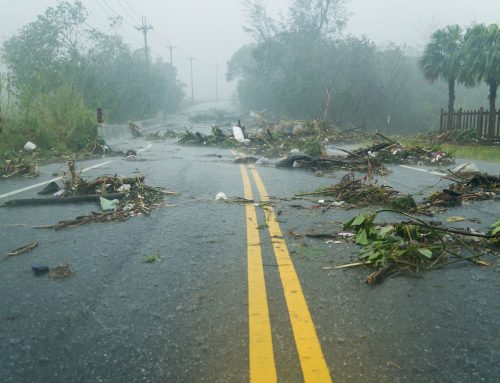Florida is known for its warm weather and frequent storms, especially during hurricane season. Heavy rains, strong winds, and potential flooding can leave your lawn littered with debris, twigs, leaves, and other debris. Cleaning up your lawn after a storm not only improves the appearance of your property but also helps prevent long-term lawn damage and maintain a safe environment. Below, we offer a practical guide with tips for effectively and safely cleaning your lawn after a storm in Florida.
1. Assess safety before you begin
Before you go out to clean up, make sure it’s safe to do so. Storms in Florida can leave downed power lines, unstable branches, or flooded areas. Follow these steps:
- Check for exposed power lines: If you notice downed or damaged power lines, stay away and contact the power company or local authorities immediately.
- Inspect trees and branches: Avoid working near broken branches or trees that are likely to fall. If there is significant damage, consider hiring a professional.
- Wear protective equipment: Wear gloves, sturdy boots, and, if necessary, safety glasses to protect yourself from sharp debris or hazardous materials.
2. Remove Large Debris First
Start by picking up larger debris, such as fallen branches, logs, or wind-blown outdoor furniture. This will make it easier to access your lawn and prevent damage to tools like lawnmowers or blowers.
- Organize Debris: Separate debris into categories, such as branches, leaves, and trash. Many cities in Florida offer debris collection services after storms, so check local regulations for proper disposal.
- Beware of Sharp Objects: Debris can include broken glass, nails, or other hazardous materials. Handle everything with caution.
3. Clean up leaves and small debris
Once you’ve removed the large debris, focus on the leaves, mud, and smaller debris that often accumulate after a storm.
- Use a rake or blower: A rake is ideal for collecting leaves and small debris. If you have a leaf blower, use it to gather debris in one place, but be careful if the lawn is wet to avoid slipping.
- Check drainage: Make sure gutters and drains near the lawn are not clogged with leaves or mud, as this can cause additional flooding.
4. Manage Flooded or Soaked Lawns
Storms in Florida often leave lawns saturated with water, which can damage the grass roots if not managed properly.
-
- Avoid stepping on wet grass: Walking on soggy grass can compact the soil and damage the grass. Wait for it to dry slightly before working on it.
- Improve drainage: If standing water is a recurring problem, consider installing a drainage system or adding sand to improve soil permeability.
- Aerate the lawn: Once the lawn is dry, use an aerator to improve air and water circulation in the soil, promoting healthy recovery.
5. Check the condition of your lawn
Storms can affect the health of your lawn, especially if it has been under water for a long time or if it has been covered by mud.
- Look for signs of damage: Observe if there are areas where the grass has weakened, yellowed, or died. In these cases, you may need to reseed or apply specific fertilizers.
- Control pests: Excess moisture can attract insects or encourage fungal growth. Inspect your lawn and apply treatments if necessary, following the recommendations of a gardening expert.
6. Prepare for Future Storms
Since storms are common in Florida, take preventative measures to minimize future cleanup work:
- Prune trees and shrubs: Before storm season, prune weak or dead branches to reduce the amount of falling debris.
- Secure loose items: Store outdoor furniture, flower pots, and decorations before a storm to prevent them from becoming debris.
- Regular maintenance: A healthy, well-maintained lawn is more resistant to the effects of storms. Mow your lawn regularly and apply fertilizers based on the type of grass.
7. Take Advantage of Local Services
In Florida, many communities offer debris collection programs after storms or hurricanes. Find out about your municipality’s schedules and requirements for disposing of branches, leaves, and other debris. Also, if the damage is extensive, consider hiring a professional landscaping or cleanup company to save time and effort.
Conclusion
Cleaning up your lawn after a storm in Florida can be a challenging task, but with an organized approach and proper precautions, you can restore your yard safely and efficiently. Assess safety, systematically remove debris, maintain lawn health, and take preventative measures for the future. With these tips, your lawn will not only look great but will also be better prepared to handle future storms. Keep your yard in top condition and enjoy Florida’s tropical landscape!







Leave A Comment